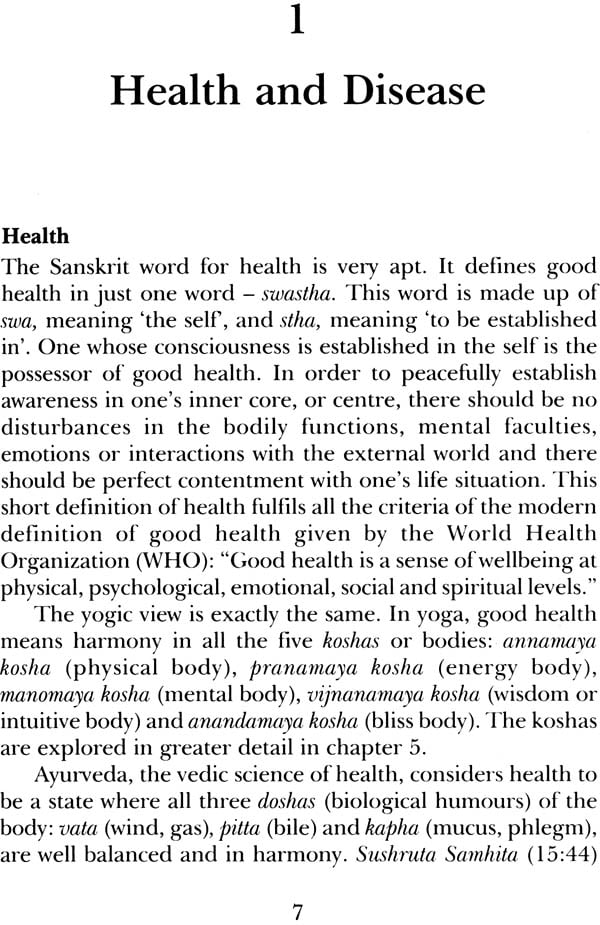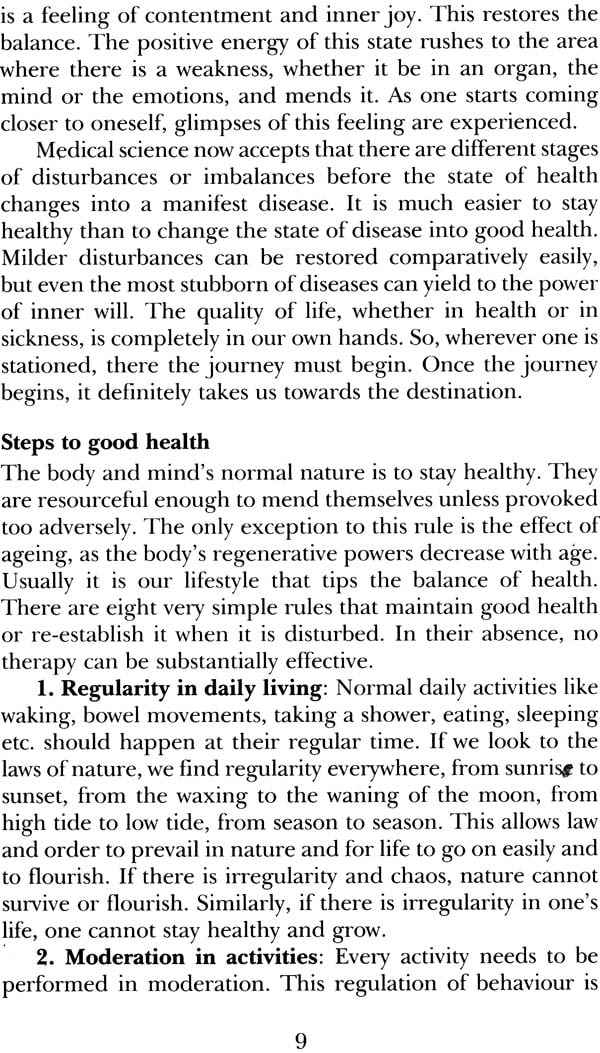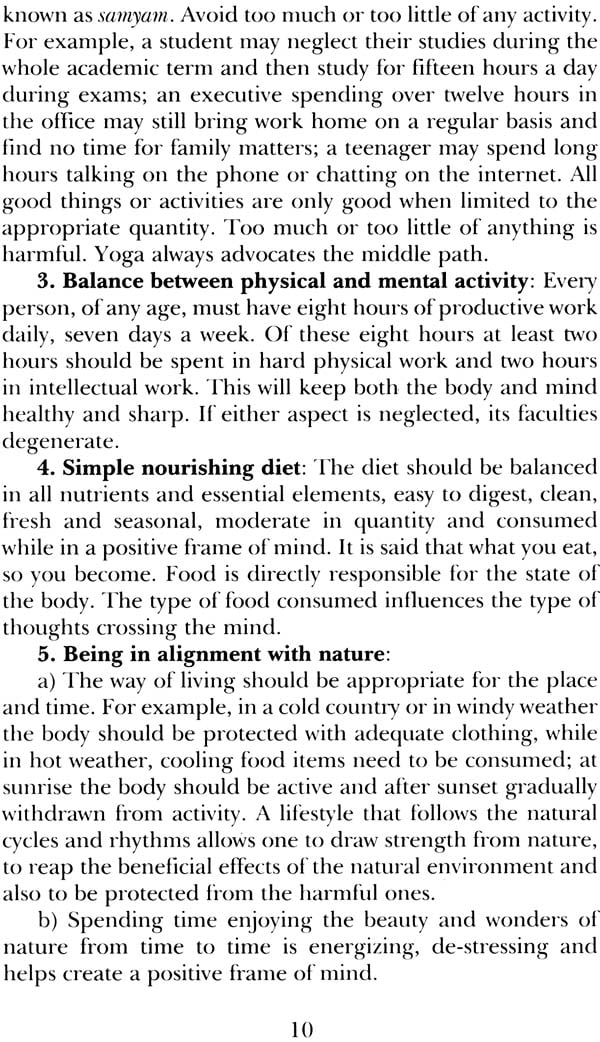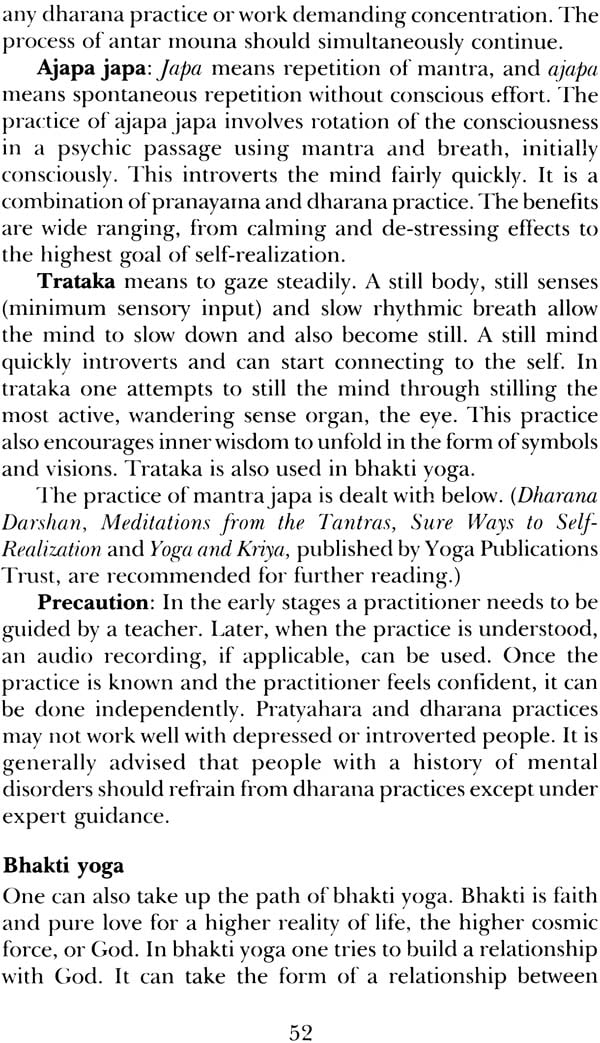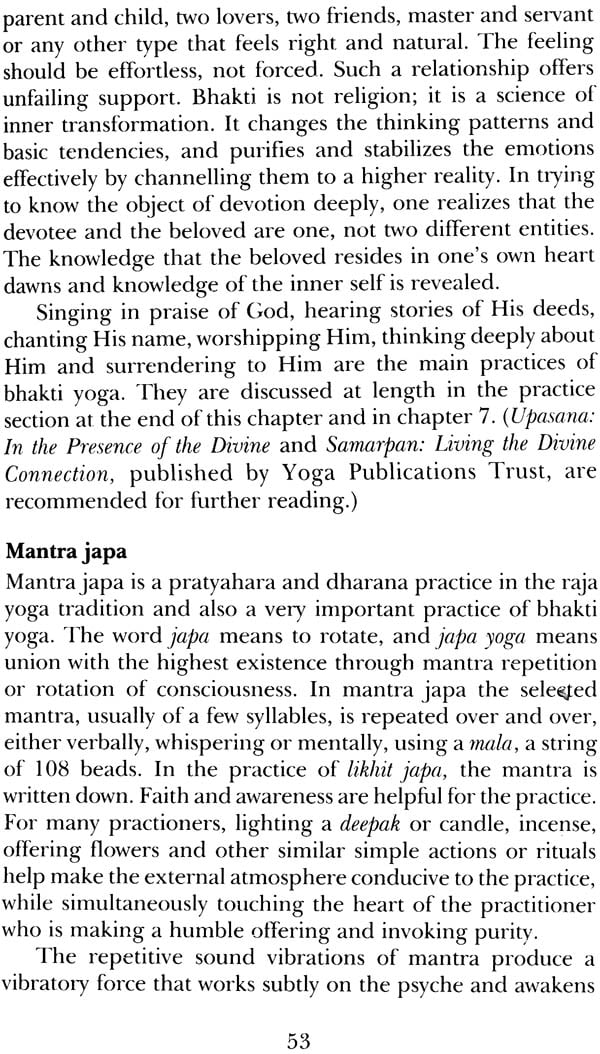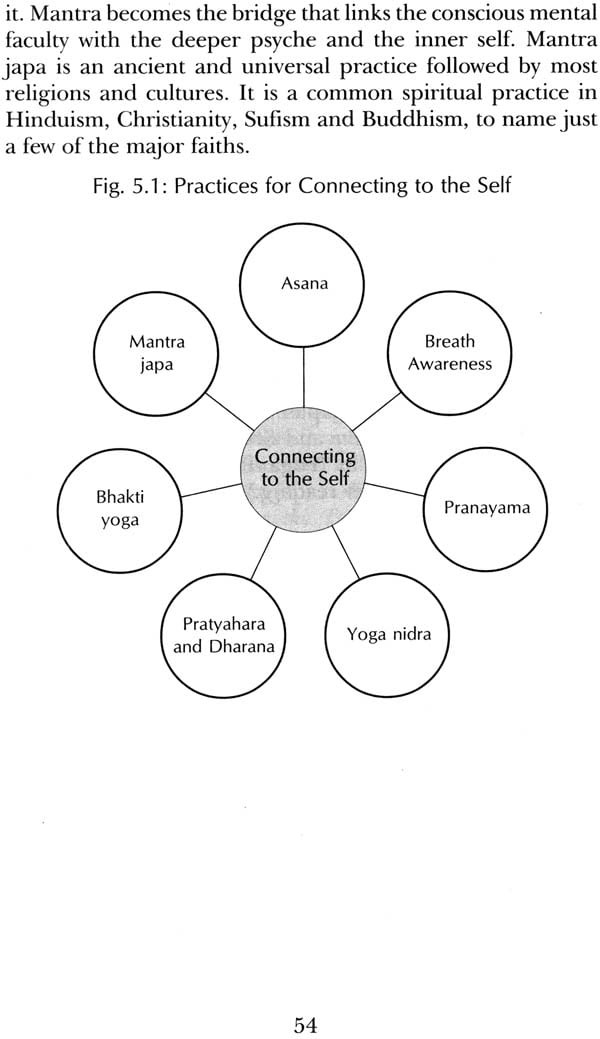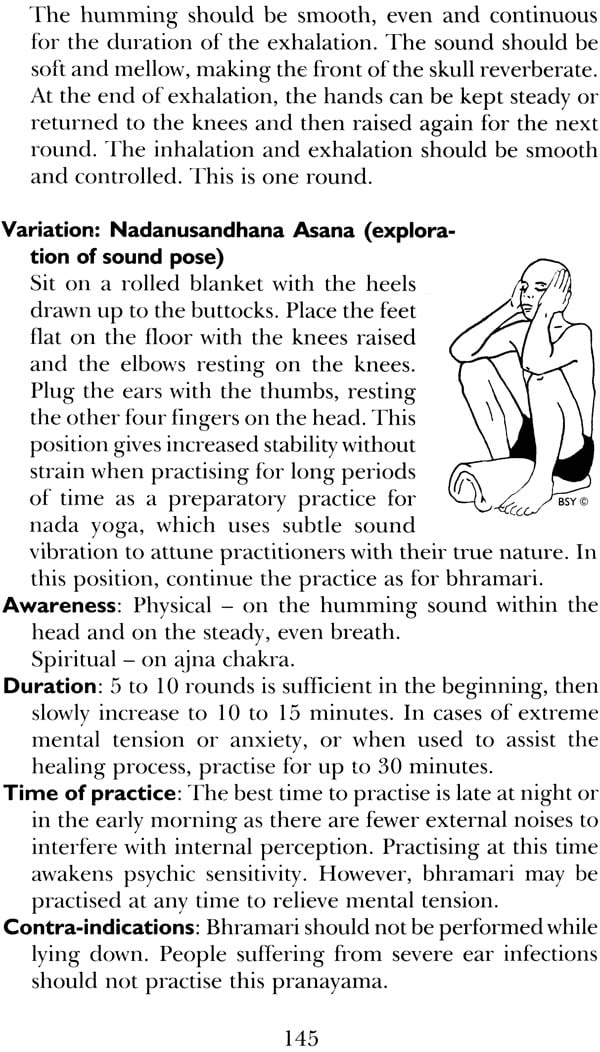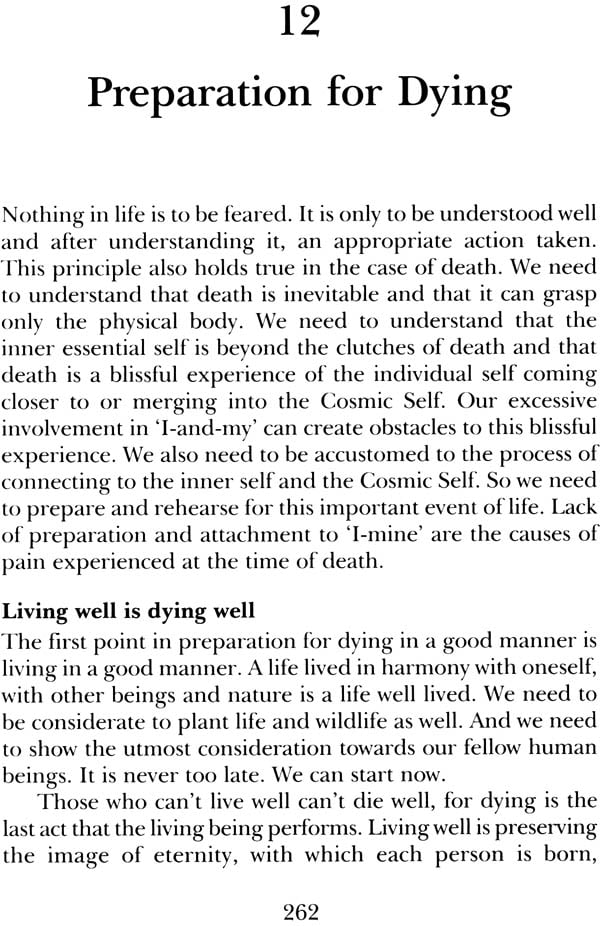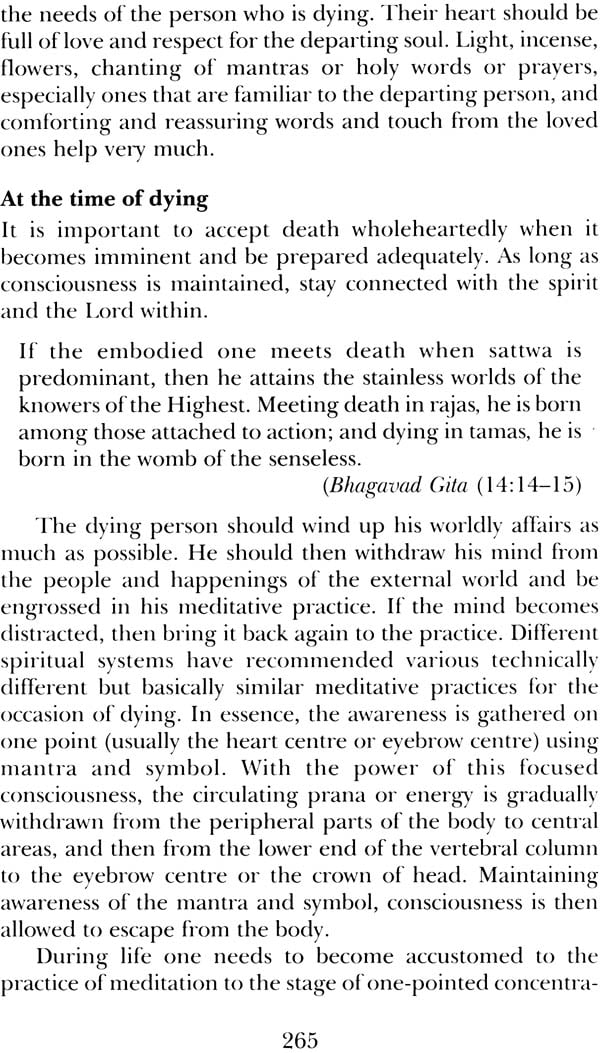
Yogic Management of Cancer
Book Specification
| Item Code: | NAF528 |
| Author: | Dr. Swami Nirmalananda |
| Publisher: | Yoga Publications Trust |
| Language: | English |
| Edition: | 2009 |
| ISBN: | 9788186336816 |
| Pages: | 298 (59 B/w Illustrations ) |
| Cover: | Paperback |
| Other Details | 8.5 Inch x 5.5 Inch |
| Weight | 340 gm |
Book Description
Yogic Management of Cancer explains cancer and its causes in a practical way in the light of modern understanding and the yogic perspective is offered on applying to help manage cancer and the effects of conventional at all levels of being. Useful yogic tools presented include yogic practices, Yogic lifestyle and diet, and practices for self-observation and cultivation of positive attitudes.
Detailed practices are included to help regain health and reconnect with the self. While recovery is not possible, people with cancer are helped towards a positive acceptance of death, and advice is offered on preparation for dying.
Nothing needs to be feared; it just needs to be understood clearly. As the wise saying goes, "the only thing to fear is fear itself." When we are not fully aware of what are we dealing with, we cannot come to any definite plan of action. This indecisiveness leads to feelings of insecurity and fear. Even if a situation or person is friendly and beneficial, doubt can lurk in the mind until we have understanding. The moment we know the situation or person to our satisfaction, our confidence returns with the ability to act appropriately and with a positive outcome. This book is an attempt to make the unknown facts about cancer more understandable and also to help outline a coping strategy using yoga. In this way we can move beyond fear and into productive action.
This book has three objectives. The first objective is to understand cancer clearly by investigating the facts and removing the misconceptions about cancer. This is the area of science. The author has also introduced a view that every disease state, including cancer, manifests in the body when the inherent qualities of living beings called gunas become grossly imbalanced.
The second objective is to understand ourselves and our inherent resources. We should understand our real needs as well as the strengths we have that can be utilized to fulfil these needs and how best to proceed on this path. We should also know the limitations we have that can prevent us fulfilling these needs and know how to manage those limitations. We should try to identify which skills or qualities we need to cultivate and how to do this. This is the area of yoga.
Once we know the nature of cancer, the stressor, and of 'I', the stressed, we can work out a winning and coping strategy. The third objective, therefore, is to identify and implement the chosen coping methods to overcome the crisis or at least to manage it adequately. This area covers the fields of science and yoga together.
Yogic teaching counsels that one should fight against the adverse situation in the best way and as far as possible, but one must also have the courage to accept whatever outcome eventuates, favorable or not, with complete dignity, making the best of that outcome. Yoga provides the wisdom to know when and how much to fight, and when and how to accept. Yoga practices are not symptom specific. Prescriptions such as 'for coughing asana A will help, for constipation practice B will help and practice C is a cure for all- from cold to cancer' do not hold true. Yoga is a holistic science. A balanced set of practices done regularly with a positive and mature attitude towards life can remedy most general problems. One or two practices can then be added or removed to cater to the current specific issue.
The techniques of the yoga practices are given separately in the practice section after the relevant chapter. Only very simple practices have been chosen for the safety of the practitioner. The book is not intended to be a complete guide for a cancer patient. The guidance of a teacher is essential. The subject of yoga is so vast that no book can be a complete authority. It is not possible to cover every practice mentioned in the text, only some practices that are particularly useful to cancer patients are included. For a broader coverage refer to the relevant publications of Yoga Publications Trust, Munger, India. References are given where relevant.
This book does not offer yoga as a cure for cancer or as a miracle, but acknowledges that the possibility is there. What- yoga does offer is a solid and reliable support to lean on. It one connects to the source of inner strength and become self reliant. It trains one to deal with the issues of life as they arise.
The need for yoga, the need to connect to the inner self is the same in a sick or a healthy person. Some people are sensitive to this need and some are less so. When cancer or any other serious difficulty obstructs the free flow life, the need for this inner connection becomes evident pressing. So although this book is written for people cancer, it is equally useful for any seriously ill person also for those without any sickness, who are eager to lore the benefits of yoga.
This book is based on the teachings of Swami Santayana saraswati and Swami Niranjanananda Saraswati. Just as a or can only reflect what is in front of it and an audio ice can only emit the words recorded on it, so too the mind of a disciple can only reflect what has been engraved it by the guru.
| Introduction | 1 | |
| 1 | Understanding Cancer | |
| 1 | Health and Disease | 7 |
| 2 | Understanding Cancer | 14 |
| 3 | Causes of Cancer | 23 |
| 4 | A Perspective on the Gunas | 33 |
| 2 | Understanding the Self | |
| 5 | Who is the Self | 41 |
| Practice Section | 55 | |
| 3 | Learning to Cope | |
| 6 | Medical Treatment | 135 |
| Practice Section | 144 | |
| 7 | The Helping Hand of Yoga | 151 |
| Practice Section | 178 | |
| 8 | Management of Bothering Conditions | 218 |
| 9 | Eating Right | 238 |
| 10 | Beyond Cancer with Yoga | 250 |
| 11 | Fear of Death | 252 |
| Practice Section | 259 | |
| 12 | Preparation for Dying | 262 |
| Appendix | ||
| Yoga Nidra: A Healing Practice for People Living with Cancer | 271 | |
| References | 285 | |
| Bibliography | 287 | |
| Index of Practices | 289 |
